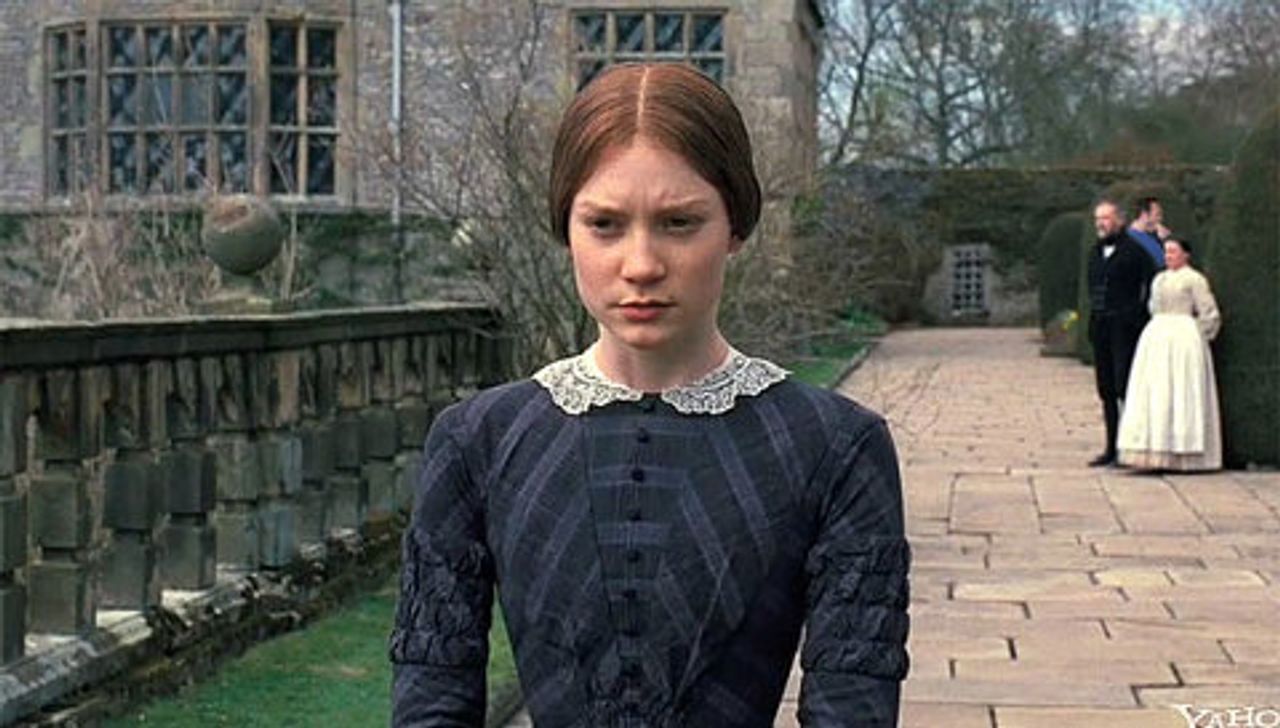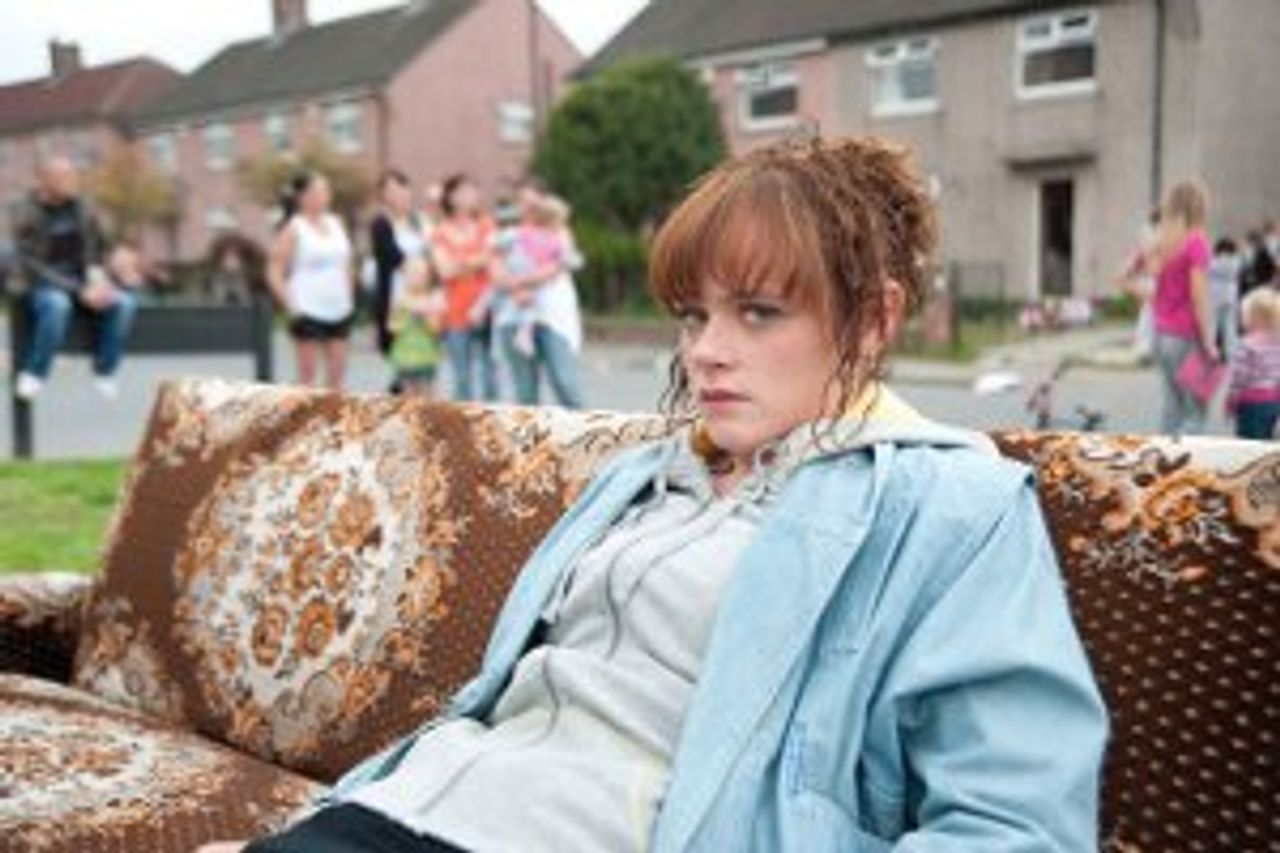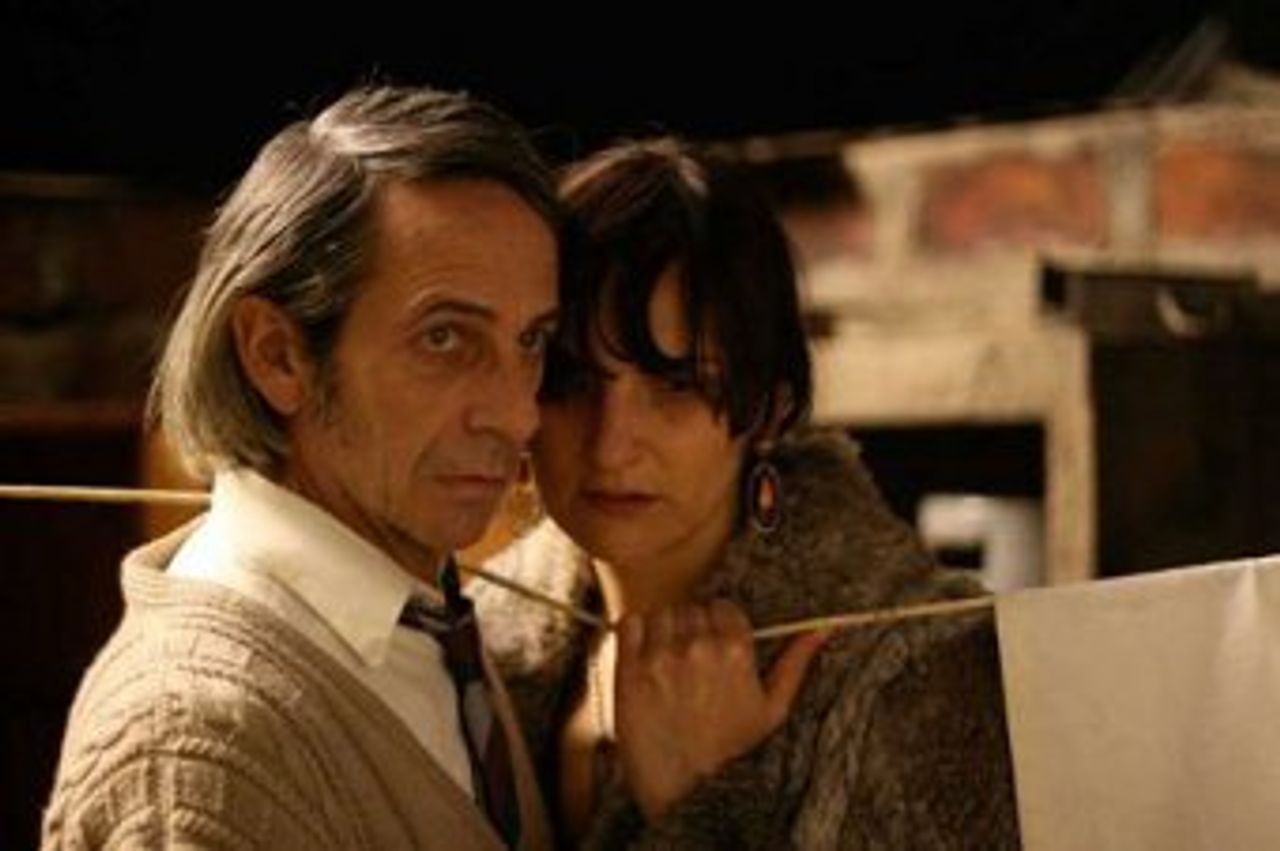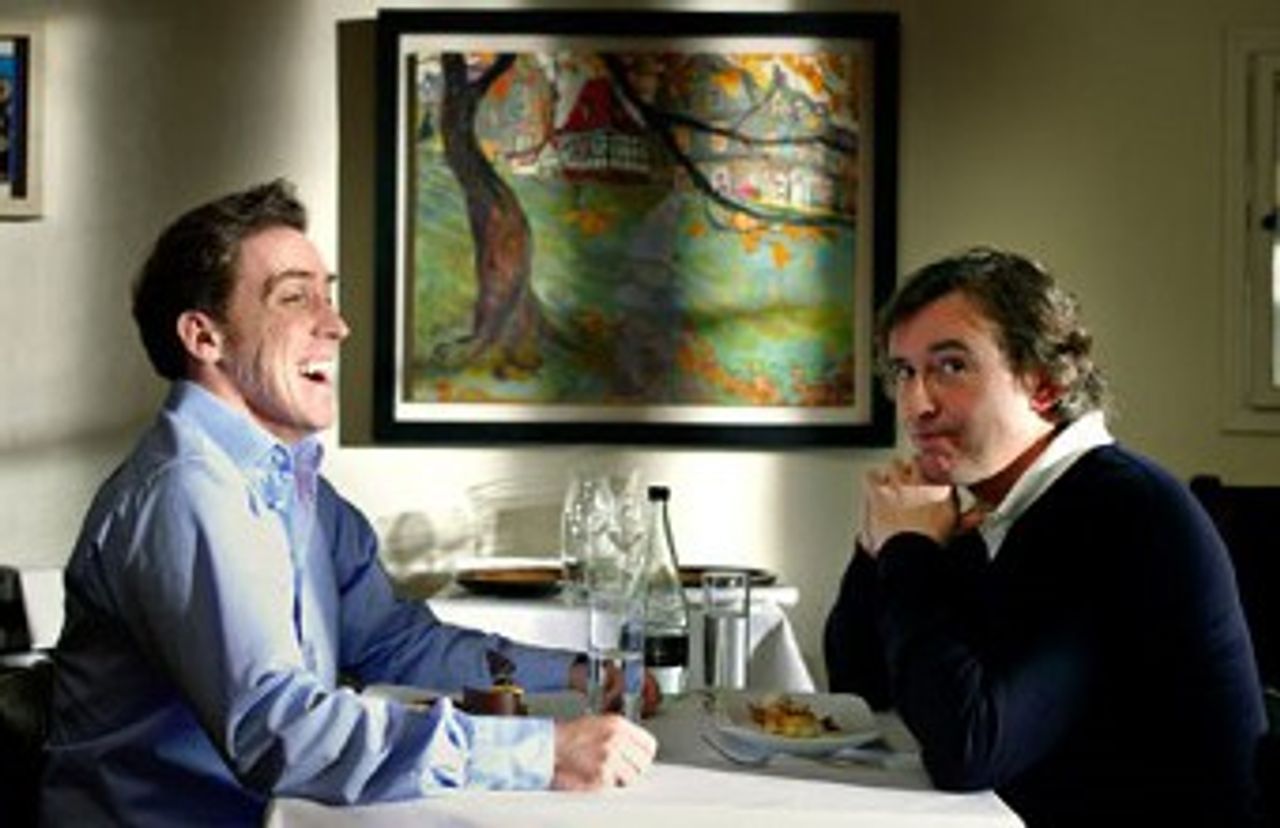This is the fifth in a series of articles on the recent Sydney Film Festival. [Part 1] [Part 2] [Part 3] [Part 4]
Jane Eyre
Jane Eyre by Charlotte Brontë (1816-1855) is probably the most filmed English novel in the history of the cinema. The first version, which was produced in 1910, was followed by four other silent productions between 1914 and 1915. The book has been filmed 27 times, including nine television series, in the past 100 years. The sheer volume of versions—one on average every five years—is an obvious testament to the timeless artistic depth and social power of the original.
 Jane Eyre
Jane EyreThe latest production, directed by Cary Fukunaga and starring Mia Wasikowska (Jane), Michael Fassbender (Edward Rochester) and Judi Dench (Mrs Fairfax), is a restrained and largely successful effort and one that will hopefully turn a new generation to Brontë’s original, and other classic works by her talented sisters, Emily (1818-1848) and Anne (1820-1849).
Writing in 1854, Karl Marx stated that Charlotte Brontë, Elizabeth Gaskell, William Makepeace Thackeray and Charles Dickens were a “splendid brotherhood of fiction writers in England, whose graphic and eloquent pages have issued to the world more political and social truths than have been uttered by all the professional politicians, publicists and moralists put together.”
Jane Eyre’s story, of course, is well known. Orphaned after her parents died from typhus, she lives at her well-to-do uncle’s home but is unloved. Her aunt and her children treat her callously and she is sent away to the Lowood charity school, where the cruelty continues. “We shall root out the wickedness from this small, ungrateful plant,” declares the pious clergyman running the institution as he punishes Jane for a trivial offence. She develops a loving friendship with Helen Burns, who later dies of consumption at the school.
Jane becomes a governess and gets a job at Thornfield Hall, the mysterious residence of wealthy landowner Edward Rochester. A brooding and somewhat intimidating figure, Rochester is intrigued by the intelligent and fiercely independent young woman. Rochester and Jane develop a complex relationship and eventually fall in love but the story takes a number of dark turns and sees Jane leave.
Fukunaga’s feature begins with a distraught Jane leaving Thornfield Hall and heading onto the moors. She is given shelter at the home of St. John Rivers, a local cleric, and his sisters, and later gets a job as a teacher. The film then unfolds in flashback form and concludes with Rochester and Jane reunited and then married.
While the latest version has some weaknesses—there is a certain rigidness in Jane and Rochester’s relationship—the performances by Wasikowska and Fassbender are generally good and well-supported by Judi Dench. The two-hour feature is beautifully photographed and it is refreshing to see a ‘young’ Jane. Mia Wasikowska was 19 when the film was shot, roughly the same age as Jane when she first meets Rochester.
Brontë’s novel is an exceptional piece of literature. Written during the mid-1840s when mass strikes and protests by the Chartist movement shook the British political establishment, the story is filled with biting social commentary and contempt for the hypocrisy of organised religion and for social conventions that poison healthy human relations. It evinces a genuine concern for the poor and is underpinned by a self-confidence and determination that society must change.
Elements of Jane Eyre are directly drawn from Brontë’s own experiences and the conditions of life where her family lived in Haworth on the Yorkshire moors. Charlotte Brontë, like Jane, became a governess and was intimately familiar with all that it entailed. Like Helen Burns, Jane’s Lowood charity school friend, Brontë’s sisters, Elizabeth and Maria, died of tuberculosis at an early age because of the poverty and unhealthy conditions at their school. Emily and Anne both died young—30 and 29 respectively.
Fukunaga’s Jane Eyre marks a sharp change in subject matter compared to his 2009 first feature, Sin Nombre (see review). It will be interesting to see the results of his next project, No Blood, No Guts, No Glory, which is set during the American Civil War, and about a commando unit of Union soldiers who hijack a train in Georgia.
Vital elements missing
The Arbor is about the young West Yorkshire writer Andrea Dundar. Weakened by alcoholism, she died of a brain haemorrhage, aged 29, in December 1990. The title is from Dunbar’s first play and the name of the poverty-stricken housing estate in Bradford, where Dunbar was born and raised. The semi-autobiographical play explores the problems facing a pregnant teenager and her drunken abusive father.
 The Arbor
The ArborDirector Clio Barnard blends documentary footage and extracts from Dunbar’s semi-autobiographical plays, including outdoor performances in what remains of the estate, along with extended audio interviews with two of Dunbar’s adult children—Lorraine and Sarah—and other friends and relatives. The interviews are mimed by actors, a technique that gives the story a forceful immediacy and allows some of those interviewed, particularly the daughters, a self-confidence they may not have had if they been filmed.
The Arbor charts Dunbar’s short-life and the horrendous difficulties that Lorraine, her eldest daughter, faced. Lorraine (mimed by Manjinder Virk), was only 10 when her mother died. She was subjected to constant racist abuse in the estate and turned to heroin and other hard drugs, which started pouring into working class estates throughout Britain during this time. Lorraine became a prostitute to finance her habit and served several prison terms. Prison, she explains, was the only place where she felt safe. In 2007, she was convicted of the manslaughter of her one-year-old son, who accidently overdosed on his mother’s methadone.
Director Max Stafford-Clark discovered Dunbar in a women’s shelter in Haworth and staged her first play, which she wrote when she was 15, at London’s Royal Court in 1980. Hailed by some critics as a “literary genius from the slums,” Dunbar followed this with Rita, Sue and Bob Too in 1982, later made into a film by Alan Clarke, and Shirley (1986), her last play.
Dunbar’s dramas capture something of the horrendous conditions facing the most oppressed social layers during the first six years of the Thatcher government. But her confrontational work and her ability to capture the raw, matter-of-fact language of the working class estate were not underpinned by a deeper appreciation of the underlying source of the social problems confronting her characters.
This problem is reflected even more starkly in Clio Barnard’s film. Andrea Dunbar’s parents had both worked in Bradford’s textile factories but the terminal decline and destruction of the industry has no mention in the 94-minute feature. Nor is there any reference to the Thatcher government’s savage assault on the working class, the union betrayal of the 1984-85 miners’ strike and the subsequent closure of pits and mining communities in Yorkshire and throughout Britain. Alcoholism and drug abuse and other social horrors produced by mass unemployment increased exponentially in these communities and continued on to the next generation under New Labour’s “free market” governments.
Barnard’s failure to make any connection between these developments and the Dunbar family tragedies, even in a limited form, is an extraordinary omission. Without this, viewers can only conclude that the film is about fatally flawed characters. This dovetails with the government and media rhetoric that poverty is an “individual responsibility” or a “lifestyle choice” and that social austerity measures are for their “own good”.
Self-consciously bleak
Post Mortem, written and directed by Pablo Larraín, is set in Chile during the military coup that deposed the popular front government of Salvador Allende in 1973. Larraín’s movie is a self-consciously bleak work. Like Tony Manero (2008), his previous feature about the Pinochet dictatorship in 1978, Larraín’s latest movie focuses his attention on a repulsive figure and one largely unmoved by the bloody repression.
 Post Mortem
Post MortemAlfredo Castro is the central protagonist in both films. In Tony Manero, Castro plays a poverty-stricken, psychopathic killer obsessed with the 1970s disco movie Saturday Night Fever. In Post Mortem he is Mario, a repressed morgue assistant who falls in love with Nancy (Antonia Zegers), an ageing cabaret star. Her home, which is across the street from Mario’s, is used for clandestine meetings of coup opponents. She eventually responds to his advances but a few days later rejects him for another lover—an Allende supporter. Mario agrees to assist the couple, who are on the run, but then callously takes his revenge.
Post Mortem has some chilling moments: opening footage shot from underneath a military tank as it rolls through Santiago is effective; and scenes at the morgue are menacing and ghoulish as the hospital is presented with more and more repression victims. One day a group of military officials arrive with Allende’s body and demand an autopsy. They clearly want a death-by-suicide finding. The self-absorbed Mario remains largely impassive. All in all, Post Mortem enlightens no one about this dark period and its cultivated seediness leaves a nasty taste.
A road-film with a couple of talented comics
The Trip is a slight but amusing road-film starring two British comedians—Rob Brydon and Steve Coogan—appearing as fictionalised versions of themselves. Coogan has been asked to write a series of articles on high class restaurants in the Lake District and, after his American girlfriend decides to return to the States, asks Brydon to accompany him.
 The Trip
The TripNothing really happens during this harmless and at times hilarious movie, which was directed by Michael Winterbottom and edited together from a British weekly television series of the same name.
The mildly bickering couple engage in various inane competitions, including endless impersonations of Michael Caine and other famous actors, as they travel through some England’s most beautiful scenery. Coogan, who is going through something of a mid-life crisis, feels he’s been overlooked by serious filmmakers and regards Brydon as a low-brow comedian.
It’s not clear why Winterbottom decided to develop this film but it’s a welcome relief from his last feature, The Killer Inside Me, an unpleasant and gratuitously violent thriller in which one woman is beaten to death in an extended murder scene.
To be continued
